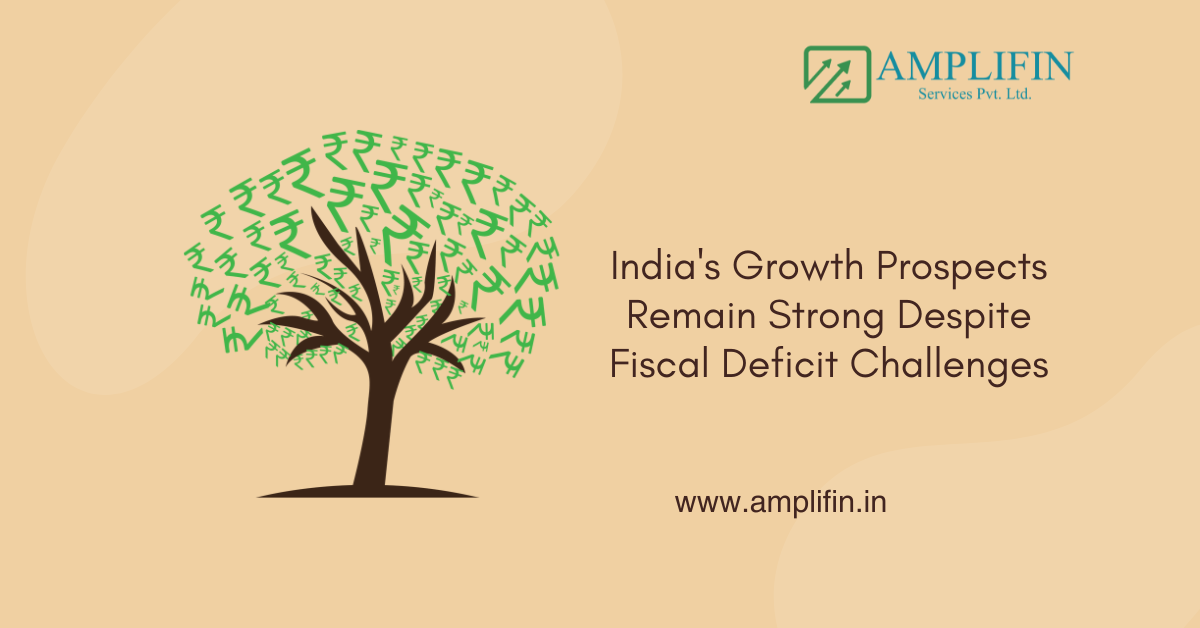India’s Growth Prospects Remain Strong Despite Fiscal Deficit Challenges
India’s economy continues to show resilience and potential for growth, even as it grapples with the ongoing challenge of managing its fiscal deficit. This comprehensive analysis delves into the intricate relationship between India’s fiscal policies, economic growth, and global economic trends. Understanding these dynamics is crucial for investors, policymakers, and anyone interested in the future of one of the world’s fastest-growing economies. This article provides valuable insights into how India balances its growth ambitions with fiscal responsibility, and what it means for the country’s economic future.

India’s Fiscal Deficit: A Balancing Act
India’s fiscal deficit has been a topic of intense debate and scrutiny in recent years. The fiscal deficit, which represents the gap between the government’s total expenditure and its total revenue, is a critical indicator of the country’s financial health. In 2024, India continues to face the challenge of managing this deficit while simultaneously pursuing ambitious growth targets.
The government’s efforts to reduce the fiscal deficit have been met with both praise and criticism. On one hand, fiscal discipline is seen as essential for long-term economic stability and to attract foreign investment. On the other hand, there are concerns that overly aggressive deficit reduction could stifle growth, particularly in key sectors such as infrastructure and manufacturing.
Recent data from the Finance Ministry shows that India has made progress in reducing its fiscal deficit as a percentage of GDP. However, the absolute numbers remain substantial, with the deficit for the fiscal year 2024 projected to be in the range of several lakh crore rupees. This highlights the ongoing challenge of balancing fiscal consolidation with the need for public expenditure to support economic growth.
Global Economic Context and India’s Position
In the global economic landscape, India’s growth story continues to stand out. Despite challenges such as the lingering effects of the pandemic and global economic uncertainties, India’s economy has shown remarkable resilience. The World Bank and other international financial institutions have consistently ranked India among the fastest-growing major economies.
However, the global context also presents challenges. Fluctuations in oil prices, geopolitical tensions, and shifts in global trade patterns all have the potential to impact India’s fiscal situation and growth prospects. The government and the Reserve Bank of India (RBI) have been proactive in implementing policies to cushion the economy from external shocks while maintaining a focus on growth.
India’s position in the global market has been strengthened by various initiatives aimed at improving ease of doing business, attracting foreign direct investment, and enhancing the country’s manufacturing capabilities. Programs like “Make in India” and the push for a digital economy are designed to elevate India’s competitiveness on the world stage.
Public Debt and Fiscal Management
The management of public debt is intricately linked to India’s fiscal deficit and overall economic health. The debt-to-GDP ratio, a key indicator of a country’s ability to pay back its debts, has been a focus area for the government. While this ratio has seen some improvement in recent years, it remains higher than what many economists consider ideal for a developing economy like India.
The government’s approach to fiscal management involves a combination of measures aimed at increasing revenue collection and optimizing expenditure. Efforts to widen the tax base, improve tax administration, and reduce tax evasion have been ongoing. On the expenditure side, there’s been a push to rationalize subsidies and improve the efficiency of government spending.
The introduction of the Goods and Services Tax (GST) in 2017 was a significant step towards improving India’s fiscal position. While the initial implementation had its challenges, the GST has begun to show positive results in terms of increased tax compliance and a more streamlined tax structure.
Growth Prospects and Economic Reforms
India’s growth prospects remain strong, supported by a young demographic, increasing urbanization, and a growing middle class. The government has set ambitious targets for economic growth, aiming to make India a $5 trillion economy in the near future.
To achieve these growth targets, India is focusing on several key areas:
- Infrastructure Development: Massive investments in roads, railways, ports, and digital infrastructure are underway to improve connectivity and reduce logistics costs.
- Manufacturing Sector: The “Make in India” initiative aims to boost the manufacturing sector’s contribution to GDP and create jobs.
- Digital Economy: India’s digital transformation is seen as a key driver of future growth, with initiatives promoting digital payments, e-commerce, and technology-driven services.
- Agriculture Reform: Efforts to modernize the agricultural sector and improve farmer incomes are ongoing, although not without controversy.
These reforms and initiatives are designed to improve India’s long-term growth prospects while also addressing structural challenges in the economy.
Challenges and Risks to Fiscal Consolidation
While India’s growth story remains compelling, there are several challenges and risks to fiscal consolidation that need to be addressed:
- Interest Payments: A significant portion of government expenditure goes towards interest payments on existing debt, limiting the fiscal space for developmental spending.
- Subsidies: Rationalizing subsidies without affecting the vulnerable sections of society remains a delicate balancing act.
- State Finances: The fiscal health of state governments is a critical factor in overall fiscal management, with some states facing high levels of debt.
- External Risks: Global economic slowdowns, trade tensions, and oil price volatility can impact India’s fiscal situation.
- Revenue Shortfalls: Any significant shortfall in tax collections or disinvestment targets can put pressure on the fiscal deficit.
Addressing these challenges requires a combination of short-term measures and long-term structural reforms. The government’s ability to navigate these challenges while maintaining growth momentum will be crucial for India’s economic future.
The Way Forward: Balancing Growth and Fiscal Responsibility
As India moves forward, the key will be to find the right balance between promoting growth and maintaining fiscal discipline. This involves:
- Prioritizing Expenditure: Focusing on high-impact areas such as infrastructure, education, and healthcare while improving the efficiency of government spending.
- Enhancing Revenue Collection: Continuing efforts to widen the tax base, improve compliance, and rationalize the tax structure.
- Structural Reforms: Implementing reforms in labor laws, land acquisition, and the financial sector to improve ease of doing business and attract investment.
- Debt Management: Developing a clear roadmap for reducing the debt-to-GDP ratio over the medium to long term.
- Fiscal Federalism: Working closely with state governments to ensure overall fiscal health and coordinated economic policies.
- Transparency and Accountability: Improving the quality and timeliness of fiscal data to build market confidence and enable better policy decisions.
Key Points to Remember:
- India’s fiscal deficit remains a challenge, but the country has made progress in fiscal consolidation.
- The global economic context presents both opportunities and risks for India’s growth prospects.
- Public debt management is crucial for long-term economic stability and growth.
- India’s growth prospects are supported by demographic advantages and ongoing economic reforms.
- Key focus areas for growth include infrastructure development, manufacturing, digital economy, and agriculture.
- Challenges to fiscal consolidation include high interest payments, subsidy rationalization, and potential revenue shortfalls.
- Balancing growth with fiscal responsibility requires prioritized spending, enhanced revenue collection, and structural reforms.
- Fiscal management at both the central and state levels is critical for India’s economic future.
- Transparency and accountability in fiscal matters are essential for building market confidence and enabling effective policy-making.
As India continues its journey towards becoming a global economic powerhouse, the interplay between fiscal management and growth strategies will remain a critical area of focus. By addressing these challenges head-on and capitalizing on its strengths, India is well-positioned to achieve its economic ambitions while maintaining fiscal stability.
